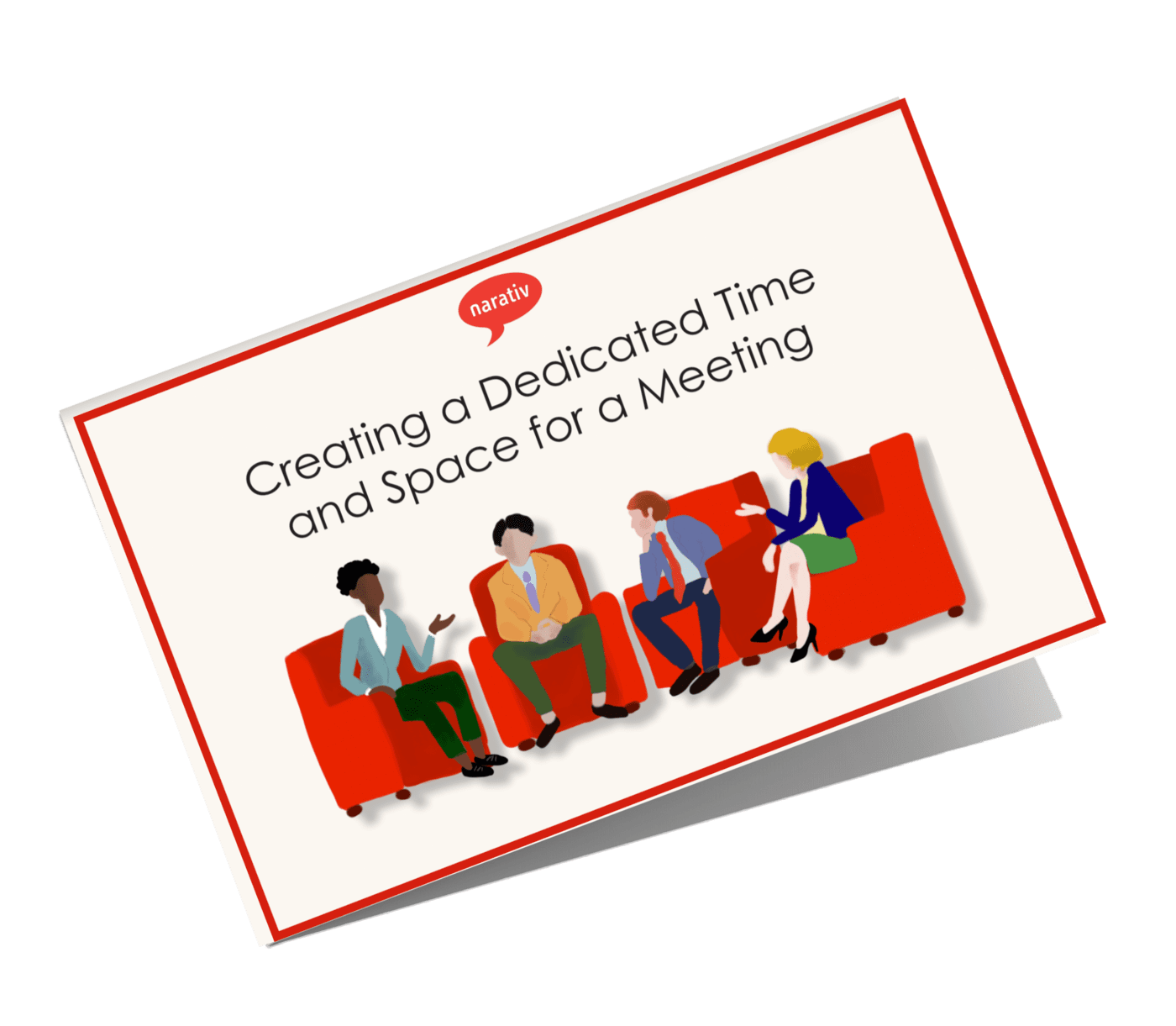In a meeting where attention-spans may be short, you’ll be looking for a story that quickly grabs your audience’s attention, and leaves a strong impression. Ideally, your listeners would feel what you want them to feel (and be inspired to do what you want them to do!) with the least amount of excess information. Now is the time to tell a sense-based story. In business storytelling, a sense-based story is the most efficient way to maximize the impact of your speaking time.
What is a sense-based story?
A sense-based story means relating events as they were seen, heard, smelled, tasted, and touched. In other words, using only the 5 senses. In this storytelling method, judgments, comments, opinions, and critiques are purposely excluded. Instead, we rely entirely on our powers of factual description to take listeners on a sensory expedition through the story’s landscape. An easy rule of thumb for this method would be to say what actually happened, not what you thought or felt about what happened.
At Narativ we’ve developed a specific framework that assists in learning and perfecting sense-based storytelling, called the What happened? method. And it’s best explained through a creative analogy: the What Happened? Camera.
The What Happened? Camera
According to the What Happened? Camera, the following are not facts. The camera cannot see these mental creations. While reading through the list of terms, they may seem obvious and easy to avoid. However, you’ll be surprised to find yourself as a matter of course relying on these categories of internal experience to communicate. What’s liberating is that over time you will come to see them as crutches that you can cast away, as you perfect your storytelling according to the What happened? method. Let’s review:
- Feelings: Emotions, sensations, and internal experiences that are not thoughts.
- Interpretations: Explanations based largely on our own version of things.
- Judgments: The tendency to objectify, qualify, or characterize someone based on our own proclivity to certain ways of thinking or viewing others.
- Opinions: Views or judgments not necessarily based on fact or knowledge; general beliefs.
- Rationalizations: Attempts to justify (an action or attitude) with logical reasoning.
- Commentary: The expression of opinions or offering of explanations about an event or situation.
- Internal thoughts: These include comments that begin “Well, I thought to myself” or “I said to myself.” These are preambles to saying what happened. When you use the What Happened? Camera, you don’t need these preambles. Instead of saying in your story, “I thought to myself, ‘What a lovely day to take the team to lunch outside,’” you would represent that happened outside your head, for example, “We went to the courtyard for lunch, and I said, ‘Let’s enjoy this lovely weather.’”
Our brain loves the 5 senses
As you see, the What happened? method purposely imposes a limit. It asks you to look at your experiences fairly and squarely, stripped of the meanings and judgments that all of us tend to intertwine with story details. But why remove all that familiar, seemingly necessary material in order to tell a story? Isn’t that what makes the story personal and unique? The answer is crucial to the success of your story, and your strategy, and draws on the scientifically validated function of our brain “on stories.”
When our own feelings and interpretations about events are driving the show, they actually prevent our listeners from fully experiencing what happened for themselves. How can you be there when someone else is coloring the facts with their interpretation? Opinions beget opinions; judgments beget judgments. And we go off track. Meanwhile, when only the five sensory details are present, our audience has only one choice: to listen clearly and openly. And then build their own version of the story—personalize for themselves—based on those sensory building blocks.
In other words, because of our brain’s hardwiring, when we hear a sense-based story, we can’t help but hear, see, smell, taste and feel as if we were there. Smell the roses. Poke your finger on the barb. Hear the dog barking in the distance. These moments aren’t happening to you right now, but for the brain, they just as well might be. However, if you were to read, “That stupid dog was barking. I hate poking myself on roses, but their smell, for me, is the most amazing smell!” you would be inundated with inefficient detail, from the point of view of how the brain best absorb’s story content. More importantly, your audience’s experience wouldn’t be as immediate and powerful for themselves.
That’s the incredible power that sense-based storytelling puts in your hands as a storyteller. To create very direct experiences for listeners. Your story’s arc, also benefits, because you begin to plot out a series of tangible experiences from beginning, to your emotional turning point, and then to your end. Once you have a basic story idea, this careful way of crafting the actual experience of the story, down to the senses, is novel and powerful. You’re not just thinking about what I want to say, and when, but what do I want my audience to feel—and potentially think—at each moment of the story.
A limit can lead to creative freedom
While at first sense-based storytelling may seem restrictive, in fact it opens up enormous creative freedom. Once you understand the tool the What Happened? method provides, you can artfully use it to connect your audience to your intended meaning or outcome in a way that is more personal to them than other forms of communication.
They say great storytelling is all about choices. What choices will you make in your next story? Which sensory details will you use next to provoke your listeners’ brain into feeling, smelling, tasting, seeing and hearing the story you’re using to make your point, inspire action, or sell your service?
(This article was excerpted and adapted from Powered by Storytelling: Excavate, Craft, and Present Stories to Transform Business Communication, Murray Nossel, Ph.D. McGraw Hill: 2018.)



